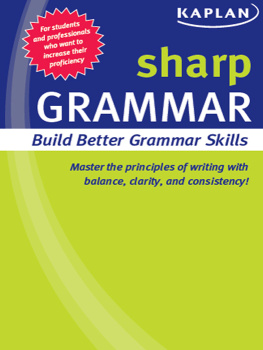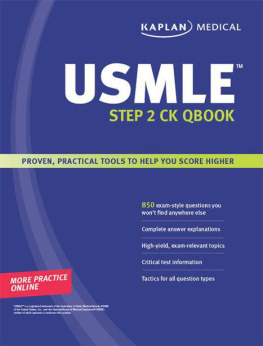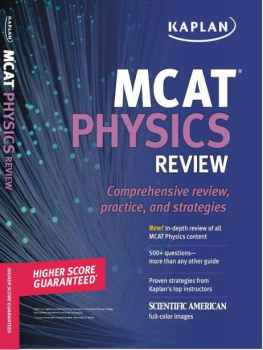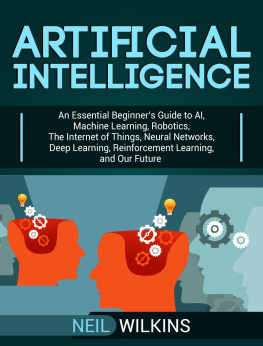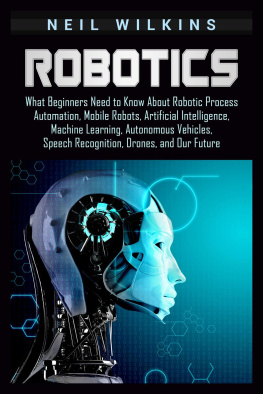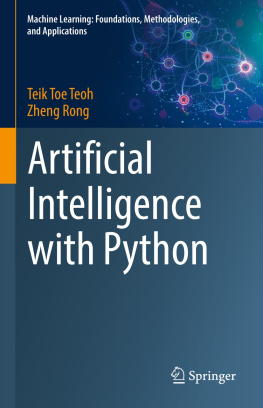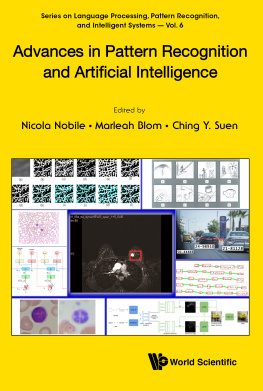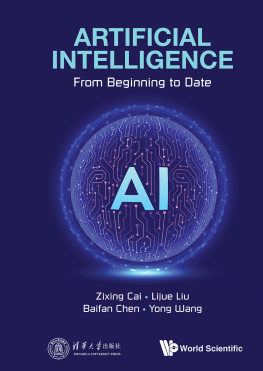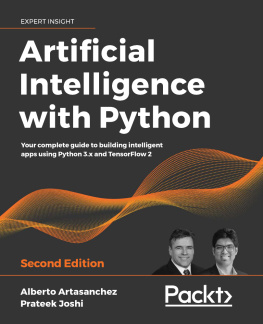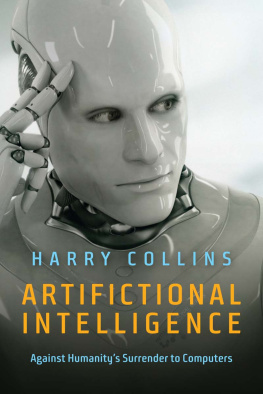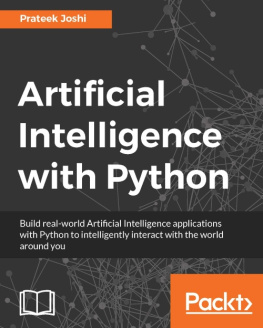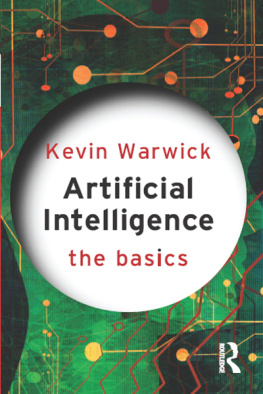Acknowledgments
I am indebted to several readers and reviewers for their thoughtful comments and suggestions, including Stan Rosenschein, Wendell Wallach, Michael Steger, Randy Sargent, George Anders, Pam Friedman, Elaine Wu, Kapil Jain, and Kenneth Judd. And, of course, to my skilled and meticulous editor, Joe Calamia (who was afflicted at a young age with an allergy to the passive voice, but might be persuaded to let this one pass), my pluperfectionist copyeditor Robin DuBlanc, along with their many colleagues at Yale University Press.
Thanks also to Richard Rhodes for referring me to my literary agent, Emma Parry of Janklow & Nesbit Associates, whose courteous yet dogged pursuit of the deal on behalf of her authors should be a model for advocates everywhere. (Next time a best seller, I promise!)
Several people were generous with their time in consenting to interviews, including Emmie Nastor, Mark Torrance, George John, and Jason Brewster.
Fei-Fei Li and Mike Genesereth (both of the Stanford AI Lab) graciously encouraged me to teach a course on this topic, then to adapt some of my lectures into this book. Fanya Montalvo suggested the idea of My Mart offering discounts on stock purchases instead of the usual checkout coupons.
I would also like to acknowledge that the title for this book is not originalit is borrowed from an outstanding short video of the same name by the famously reclusive C. G. P. Grey. Im a big fan. Check out his work on YouTube.
Last but not least, thanks to my amazing wife, Michelle Petti-grew-Kaplan, for permitting me to jot down ideas on index cards during what might otherwise be construed as romantic moments. Lets hope she doesnt read the personal portions of this manuscript until its too late to make changes.
Oops, forgot to mention the kidsChelsea, Jordan, Lily, and Camihi, guys, guess what? I finished the book!
1. Teaching Computers to Fish
They may not have agreed on much, but they unanimously adopted the moniker artificial intelligence for their endeavor, as suggested by their host, the mathematician John McCarthy. It was a heady time.
Returning to their respective institutions, few seemed to notice that the optimistic goals of the conference were largely unmet. But that didnt stop them from expressing their enthusiasm for the newly minted field. Their predictions were soon featured in general-interest publications such as Scientific American and the New York Times.
Among the conference organizers was Nathaniel Rochester, a star researcher at IBMs Watson Research Lab, who was tapped to lead the companys nascent AI efforts. But as word spread about his teams work on computer programs that played chess and proved mathematical theorems, complaints started to mount from an unexpected source.
The singular focus of IBMs storied sales force was to sell the latest data-processing equipment to industry and government. Renowned for aggressive tactics and armed with an answer to every objection, the sales force began reporting back to headquarters that decision makers were concerned about just how far this new push into AI might go. It was one thing to replace lowly clerks who typed up memos and sent out bills, but quite another to suggest that the same computers IBM was urging them to buy might someday threaten their own jobs as managers and supervisors.
Rising to this challenge, an internal IBM report suggested that the company cease all research in AI and shutter Rochesters new department.
This straightforward phrase may be one of the most widely circulated and potent cultural memes of the last half century. It deftly neutered concerns about the mysterious, brightly colored Pandoras boxes IBM was installing on raised floors in special air-conditioned computer rooms throughout the world. Nothing to fear here: these electronic brains are just obedient mechanical servants blindly following your every instruction!
Programmers schooled in sequential step-wise processing, in which you break a problem down into ever more manageable chunks (called structured programming), would be quick to agree, perhaps even today. Computers at the time were monolithic devices that loaded some data from a finite memory, fetched an instruction, operated on that data, then stored the result. Connecting two computers together (networking) was unheard of, much less having access to volumes of information generated and stored elsewhere. Most programs could be described as a sequence of Do this, then do that instructions. Rinse and repeat.
Despite the lofty goals of the field, AI programs of the time reinforced this paradigm. Following the orientation of the founders, many early AI efforts focused on stringing logical axioms together to reach conclusions, a form of mathematical proof. As a result, they tended to focus on domains that were amenable to logical analysis and planning, such as playing board games, proving theorems, and solving puzzles. The other advantage of these toy problems was that they didnt require access to large amounts of messy data about the real world, which was in scarce supply, to say the least.
In the context of the time, these efforts could be seen as an obvious next step in expanding the utility of computers. The machines were initially conceived as general-purpose calculators for tasks like building ballistics tables for the military during World War II; IBM had successfully beaten these electronic swords into plowshares by applying them not only to numbers but also to the processing of letters, words, and documents. AI researchers were simply further expanding the class of processed data to include symbols of any kind, whether preexisting or newly invented for specific purposes like playing chess. Ultimately, this style of AI came to be called the symbolic systems approach.
But the early AI researchers quickly ran into a problem: the computers didnt seem to be powerful enough to do very many interesting tasks. Formalists who studied the arcane field of theory of computation understood that building faster computers could not address this problem. No matter how speedy the computer, it could never tame what was called the combinatorial explosion. Solving real-world problems through step-wise analysis had this nasty habit of running out of steam the same way pressure in a citys water supply drops when vast new tracts of land are filled with housing developments.
Imagine finding the quickest driving route from San Francisco to New York by measuring each and every way you could possibly go; your trip would never get started. And even today, thats not how contemporary mapping applications give you driving instructions, which is why you may notice that they dont always take the most efficient route.
Much of the next several decades of AI research could be characterized as attempts to address the issue that logically sound approaches to programming tended to quickly peter out as the problems got more complex. Great effort went into the study of heuristics, which could loosely be described as rules of thumb to pare down the problems to manageable size. Basically, you did as much searching for an answer as you could afford to, given the available computing power, but when push came to shove you would turn to rules that steered you away from wasting time on candidate solutions that were unlikely to work. This process was called pruning the search space.
Monumental debates broke out over where, exactly, the intelligence was in these programs. Researchers in heuristic programming soon came to realize that the answer lay not in the rote search for a solution or the process of stringing logical propositions together, but rather in the rules they used for pruning.
Most of these rules came from experts in the problem domain, such as chess masters or doctors. Programmers who specialized in interviewing experts to incorporate their skills into AI programs became known as knowledge engineers, and the resulting programs were called expert systems. While these programs were certainly a step in the right direction, very few of them turned out to be robust enough to solve practical real-world problems.


